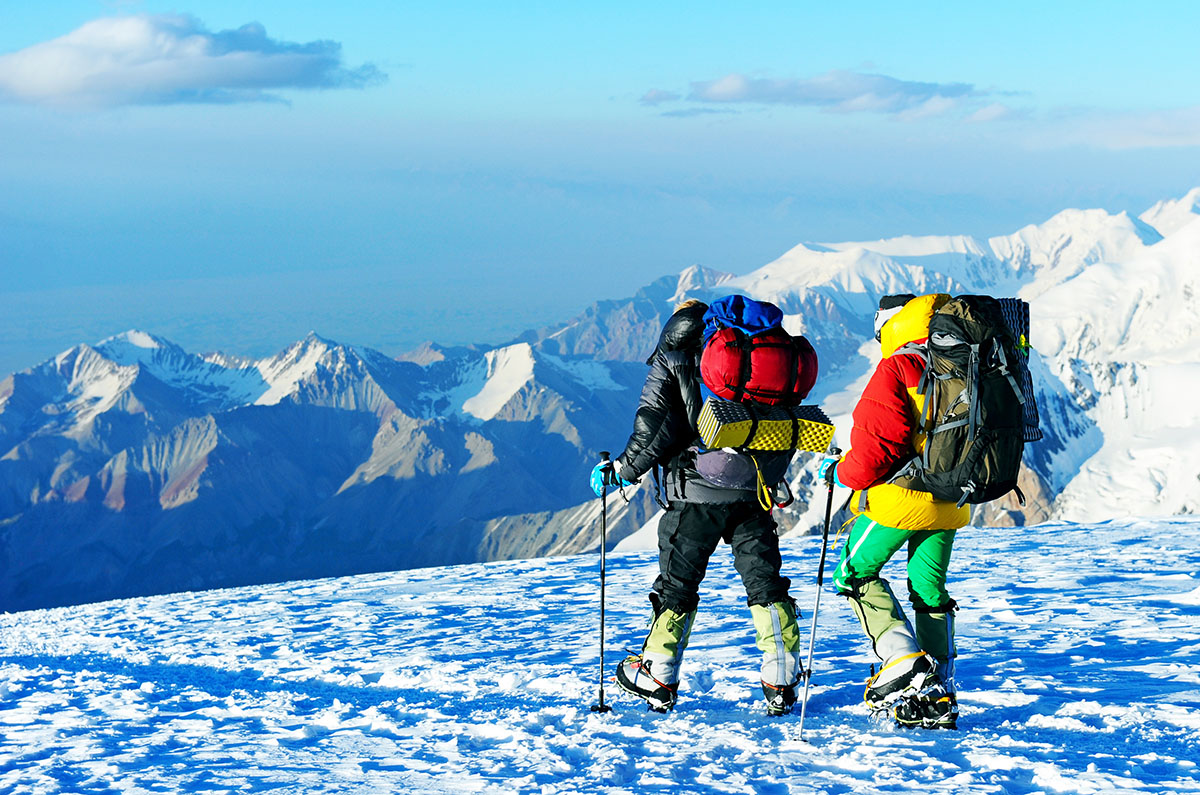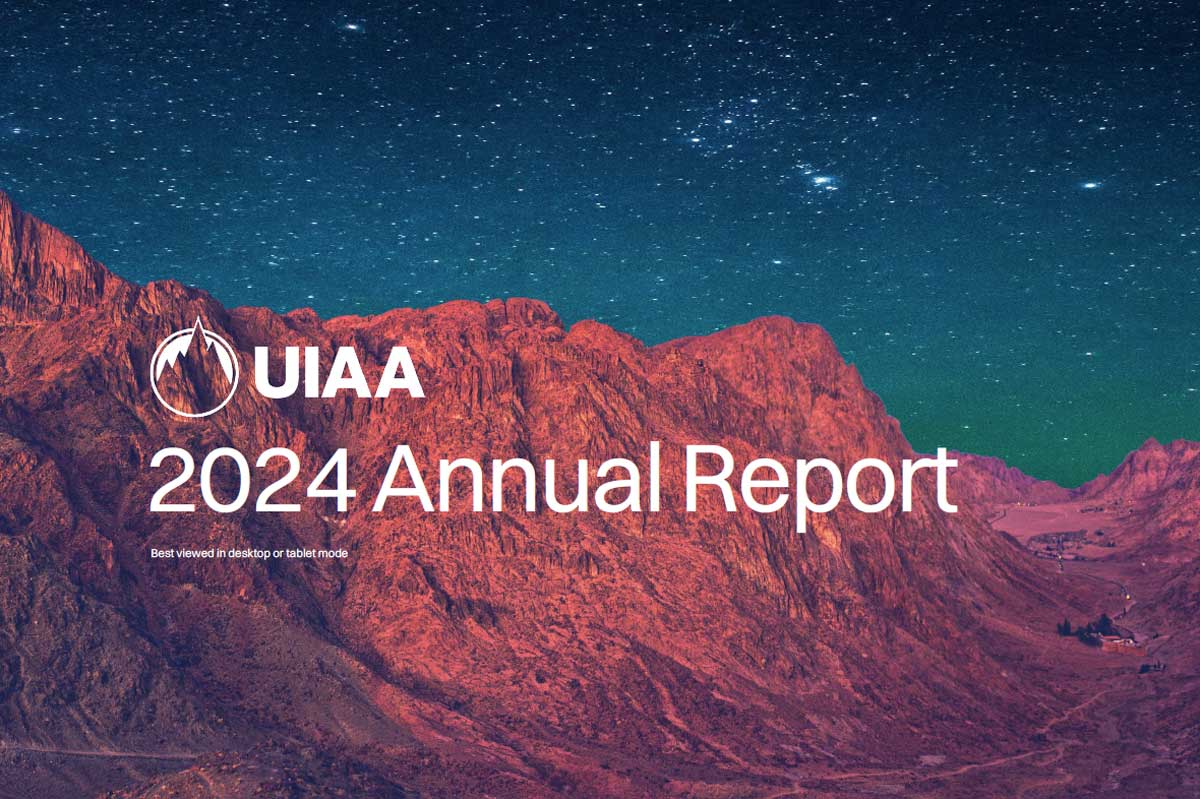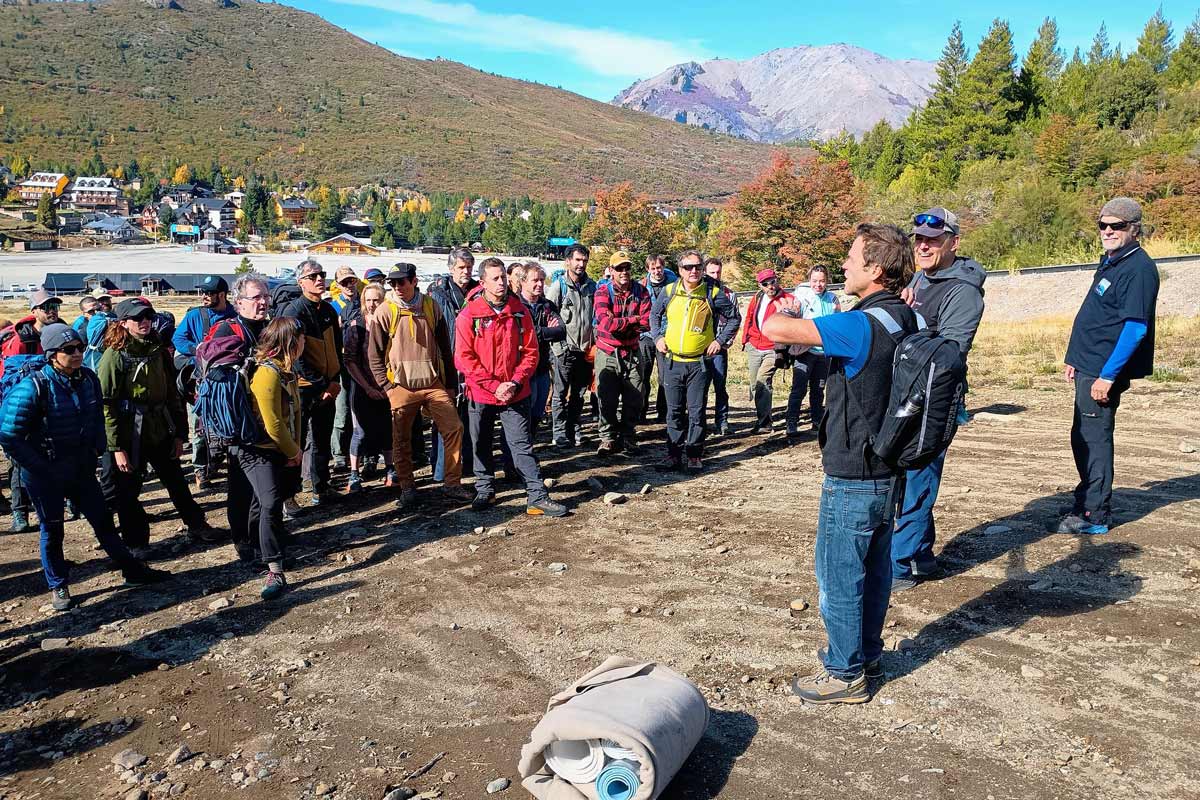This, the sixth article in the UIAA’s series dedicated to high-altitude medical advice, has a very clear target audience, principally trekking or expedition company operators and their potential clients, notably those on gap years, round the world tickets or taking part in charity events.
As the number of mountaineers who are joining organised treks or expeditions continues to increase, so does the incidence of altitude-related diseases. Technically simple high altitude treks and peaks with easy access such as Kilimanjaro, Aconcagua, or the Everest trek (with fly-in to Lukla) are still potentially dangerous because of the rapid ascent profile undertaken by many trekkers and/or offered by numerous trekking companies.
The following points, an abridged version of the original advice paper, should assist mountaineering tourists and gap year travelers in checking whether their organization has taken reasonable account of the potential health risks when planning a trip itinerary. It is hoped that by raising the awareness of the health risks involved in high altitude trips, itineraries will become safer. Do not be afraid to ask probing questions when booking a trek or mountaineering expedition. It is your money that is being spent and your life that may be at risk.
The document was produced by former UIAA MedCom President David Hillebrandt together with Ulf Gieseler, Volker Schöffl, and Thomas Küpper. The paper is available in English, Czech, German, Italian, Japanese, Polish, Portuguese and Spanish.
Key subjects to consider:
Ascent Profiles
Does the trip comply with the “Gold Standard” of not climbing too high too fast? According to the Wilderness Medicine Society consensus guidelines this gold standard is not to ascend more than 500m to a new sleeping altitude each day after reaching 3000m, and taking one rest day with no increase in sleeping altitude every 3 or 4 days.
Prior to the new WMS guidelines the figures of a daily increase of sleeping latitude of 300m was frequently quoted and many authorities still stand by this whilst acknowledging that there is massive individual variation in acclimatisation rates.
Special care should be exercised on trips that start walking from high roads as in Tibet or parts of South America where the second night may be spent at 3500m or more. Any commercial trek or expedition should make allowance for the normal slow acclimatizer booked on their trip and have some flexibility in their itinerary.
Booking Information
A reputable company should be able and willing to provide the following information:
General Information
1) A general outline of the trek or expedition to give a true picture of both the company and the trip.
2) Detailed information on the ascent profile possibly presented graphically with an itinerary indicating any days available in case of delays due to weather, health or local travel problems.
3) Specific demands of the trip such as grade of climb, hours of expected daily walking, technical difficulty of climb or trek and physical demands (see paper).
4) Details of previous success rates on the same trip and details of any problems previously encountered.
5) Details of the food provision and training and experience of any cooking team.
6) Details of toilet facilities to be expected.
7) Is the language of the group and of the country spoken / understood by staff members, porters and all the clients?
- If not: is a person always available who translates fluently?
Insurance
1) Advice on how to obtain comprehensive insurance which must include search and rescue (which may involve a helicopter if justified and available), health care, and repatriation costs. It must be with a company that is fully aware of the risks of the trip, expedition, country and altitude involved.
2) What insurance cover or arrangements are made for the protection of porters and local in-country staff which should allow for life cover, evacuation and in-country health care?
Health
1) Is there a pre trip client health assessment? This may be by simple questionnaire but for more complex cases involving clients with pre existing medical conditions, advice should be backed up by advice from an experienced expedition doctor or travel medicine expert. Clients with pre existing conditions must be responsible to taking and storing their own medication with back up for emergencies such as loss or theft.
2) Is there advice on immunisations and avoidance of traveller’s illness? This should include aspects such as basic hygiene and water purification, as well as malaria prevention advice if relevant to the area.
3) Is the company aware of health facilities available in-country and near to the trip objective? Do they have an evacuation plan if needed for clients or staff to reach appropriate facilities? Is this system totally reliant on modern technology such as Satellite phones or helicopters which can fail in difficult circumstances?
4) Is the trip leader or guide fully trained, qualified and experienced in remote area and high altitude first aid and relevant rescue techniques? Many guides do not have this advanced knowledge and training, and self assessment of skills may well be inadequate.
5) If there is a physician with the group who is expected to provide care for individuals, does he or she have specific experience &/or training in remote area mountain medicine? Has this knowledge been kept up to date?
6) Does the trip carry an appropriate remote area medical kit? If so what drugs does it contain to treat infections, pain and to buy time for descent in the event of altitude illness? Are the staff trained in the use of prescription medication?
7) If the trip carries emergency oxygen and/or a hyperbaric chamber, is anyone on the staff trained in how to use it?
8) In the event of a client, staff member or porter becoming ill are there sufficient experienced staff for one to stay with the patient or safely accompany them to a health care facility whilst one with adequate skills continues with the group?
9) Does the company encourage the use of drugs to aid acclimatisation (e.g. acetazolamide)? If so are the risks of this or other medication explained? Why do they not adhere to the golden rule of not going too high too fast and allowing natural acclimatisation? However there may be some destinations where this is sensible (e.g. driving to altitude to then await natural acclimatisation) or some clients where this is sensible (e.g. those with medically verified previous problems).
Company Communication
1) If the company answers questions based on the above selection criteria with comments such as “No problem”, “No risk” or we have “never had any problems” ask yourself if they are being realistic.
2) Has the company asked the potential client about previous mountain and altitude experience in addition to the health assessment?
3) Does the company have somebody with experience to answer specific questions? In other words, not a call centre.
4) Does the company arrange a pre-departure meeting for the trek or expedition group with staff available to answer any questions?
Local Staff
Does the company understand and adhere to the principles of care of their employed staff as outlined in the International Porter Protection Group (IPPG) guidelines (see paper). All staff should be looked after for to the same standard of care provided for the company clients (www.ippg.net).
Conclusions
Clients may pay more for slower treks and have to take more precious holiday allocation for the trip, but reputable companies do plan a sensible ascent profile with appropriate time for acclimatization in order to minimize the risk of altitude sickness. This extra time and money should enable their clients to enjoy, rather than endure/barely survive, the holiday of a lifetime. . Hopefully many clients will be tempted to return to the high mountains!
The paper also includes an Appendix, outlining the typical phrasing to describe the demands of a tour and how to interpret them.
Further Reading
This article is the latest in our Series exploring the UIAA MedCom’s extensive and essential archive of high-altitude recommendations.
Already published:
#1 Nutritional considerations in mountaineering
#2 Children at Altitude
#3 Mountain activities for people with pre-existing cardiovascular conditions
#4 Avoiding the perils of Kilimanjaro
#5 What you need to know about water disinfection in the mountains



